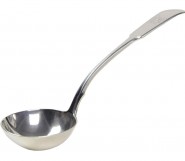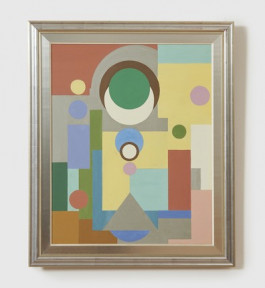Lot #39 - Ralph Balson
-
Auction House:Bonhams Australia
-
Sale Name:Important Australian Art
-
Sale Date:23 Aug 2022 ~ 7pm (AEST)
-
Lot #:39
-
Lot Description:Ralph Balson
(1890-1964)
Constructive Painting, c.1940
oil on cardboard
78.0 x 63.0cm (30 11/16 x 24 13/16in).
RELATED WORKS: Painting, 1941, oil on paperboard, 78.7 x 63.5cm, in the collection of the Art Gallery of New South Wales, Sydney; Painting no. 14, 1941, oil on cardboard, 47.3 x 78.8cm, in the collection of the National Gallery of Victoria, Melbourne; Painting, 1941, oil on cardboard on composition board, 47.2 x 78.7cm, in the collection of the National Gallery of Australia, Canberra -
Provenance:The artist's estate; thence by descent; Private collection; Philip Bacon Galleries, Brisbane; Private collection, Queensland
-
Exhibited:probably, Exhibition of Oil Paintings by Ralph Balson, Anthony Hordern and Sons Limited, Sydney, 29 July - 9 August 1941; Ralph Balson, Gallery A, Sydney, November 1979, cat. 12; Ralph Balson: 10 Constructive Paintings, Institute of Modern Art, Brisbane, 1 - 30 October 1980, cat. 1; R-Balson-/41 - Anthony Horderns' Fine Art Galleries, Ivan Dougherty Galleries, College of Fine Arts, The University of New South Wales, Sydney, 22 August - 27 September 2008
-
References:R-Balson-/41 - Anthony Horderns' Fine Art Galleries, Ivan Dougherty Galleries, College of Fine Arts, The University of New South Wales, Sydney, 2008, p. 12 (illus.); 'Art Notes', Art Monthly Australia, August 2008, issue 212, p. 54 (illus.)
-
Notes:A little over eighty years ago in July 1941, as Ralph Balson mounted his exhibition of constructive (or 'non-objective' paintings, he used both terms), the mood in Sydney was sombre. Britain and America had just frozen all Japanese assets in preparation for a war in the Pacific; the bombing of British towns and cities commenced; campaigns in Greece and North Africa suffered heavy losses; and the German Army moved relentlessly eastward into the Ukraine and towards Leningrad. At home the war was also beginning to bite. On the south coast of NSW, dairy farmers called for higher prices for milk and severe petrol restrictions slowed the delivery of food, clothing and household goods across the nation. Air raid shelters, curfews, sirens, drills and blackouts would soon come. But for Ralph Balson the war was also personal. A few months before, his 21 year old son Peter had enlisted in the R.A.A.F. and would soon see active duty in Europe. In 1943, he would be shot down over Germany and taken a prisoner of war. Months would pass before Balson and his wife knew whether Peter was still alive. By the beginning of the war, Balson had reached a stage of maturity and confidence in his art practice after decades of intense study and work. He took his first tentative moves towards abstraction with the 1939 group exhibition at the David Jones Art Gallery, showing works with prisms of vivid colour and fragmentation of form which, while abstracted, were still recognisably representational. The exhibition provoked a fierce critical backlash but rather than being tamed by the experience, Balson if anything, became more radical and over the next eighteen months worked hard on a startling new series of works. After two years Balson had sufficient works to mount a solo exhibition. He presented twenty-one works of untitled completely abstract work, their only identifiers the number in the catalogue and the price. In contrast to 1939, the exhibition hardly caused a ripple. All the press notices were brief and attempted to explain, in the simplest terms, where 'this type of art' fitted. It belonged to the modern age the writer for the Truth declared – to the age of the motor car and machine – and was distinguished by simplicity of form and expression. Paul Haefliger, the newly-appointed art critic for the Sydney Morning Herald demonstrated his recent acquaintance with contemporary European art by acknowledging the influence of Leger, Gleizes and others. Balson, he wrote (albeit reluctantly), possessed 'an excellent colour sense and feeling for design' that too few Australian artists could claim. Balson had indeed been looking at the work of Leger and Gleizes, but there were many others he studied closely, ranging from Wassily Kandinsky and Rudolf Bauer to Piet Mondrian and Ben Nicholson. Although he would later say that the biggest influence came from Mondrian, the various books and catalogues known to have been either in his personal collection or borrowed from friends, reveal the true breadth and depth of his reading and thinking. In Balson's paintings of 1940/1941, circles, squares, rectangles and triangles float and swirl across the flat plane of the surface. Colours are muted rather than primary and, perhaps unsurprisingly, fashionable and contemporary. The faded pinks, pale yellows, pastel blues and mauve-greys that fill these compositions can be seen in the colour sections of the popular women's magazines and pattern books of the day, though this particular work and a couple of others also have another palette running in counterpoint, of military greens, blues and browns. What Balson embraced in abstract painting, he later explained to fellow artist and writer Herbert Badham, was that 'the source of true design is to be found in cosmic laws and that this truth offers a better basis for progress than any other' (Adams, p.24, Edwards, p.38). This view of art was essentially optimistic, transcendent and utopian. It was beyond representation and above reality. It emphasised abstract art's positivity, its ability to lift humanity above the destructiveness and baseness of the material world. It was to herald a new expression of truth. Like the writings of Wassily Kandinsky, and later, Hilla Rebay – both of whom Balson read – it had its origins in Theosophy, though Balson's interests seemed to lean more to a mathematical and scientific direction rather than the overtly spiritual. None of the paintings sold and with the war deepening, the exhibition was packed up and sent back to his studio. Balson knew his art would be little understood by the average collector as those who bought from him tended to be among the more sophisticated in Sydney society. Patrons such as the Andre Lhote-trained artist Mary Evatt and her husband Herbert who was soon to be the next Attorney-General. This encouragement seems to have been sufficient for Balson persisted with abstraction and never returned to a figurative style. He remained convinced that this was the future. On 30th May 1945 Warrant-Officer Peter Balson was among thirty British, Australian and Canadian POWs liberated from Germany. For the next fifteen years Ralph Balson would concentrate on constructive compositions of pure colour and intricate geometry. He refined his technique and painted some of the most beautiful and profound works of his career. He exhibited, often more than once, every year from 1944 for the next twenty years, and was recognised in his lifetime as one of Australia's most important artists. Dr Candice Bruce
-
Estimate:A$400,000 - 600,000
-
Realised Price:
-
Category:Art
This Sale has been held and this item is no longer available. Details are provided for information purposes only.










